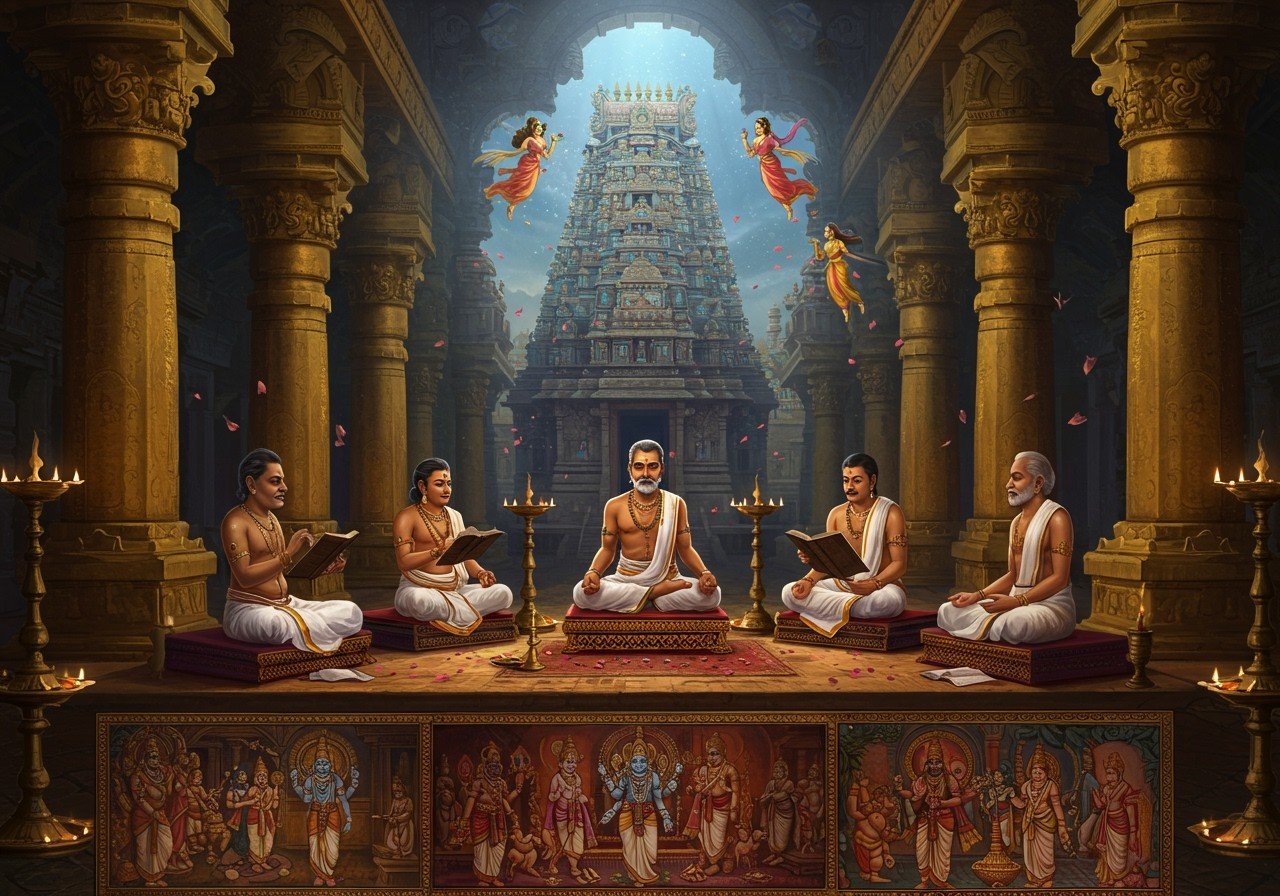
The First Sangam Period holds immense significance in the history of Tamil Nadu, India. This era, shrouded in legend and rich in literary heritage, represents a foundational period for Tamil language, culture, and identity. While much of its history is based on later texts and traditions, its impact on subsequent Tamil literature and culture is undeniable.
Understanding the Sangam Literature
It’s important to clarify that what is commonly referred to as “Sangam literature” primarily dates from the period between 300 BCE and 300 CE. This body of work, comprising 2381 poems attributed to 473 poets (with 102 anonymous contributions), provides invaluable insights into ancient Tamil society, culture, and beliefs. These works were created during the historical three literary academies, or chankams, in Madurai.
Notable works from this period (300 BCE – 300 CE) include:
- Tolkappiyam: A treatise on Tamil grammar and rhetoric, demonstrating the sophisticated linguistic development of the time. It provides crucial insights into early Tamil language structure and literary conventions.
- Ettuthogai (Eight Anthologies): A collection of eight anthologies of poetry covering a wide range of themes including love, war, and social life. These anthologies showcase the diverse poetic forms and expressions prevalent during the Sangam period.
- Pathupattu (Ten Idylls): A collection of ten longer poems that often narrate stories of kings and heroes, providing glimpses into the political and social landscape of ancient Tamil Nadu. These idylls demonstrate a more narrative and epic style of poetry.
Exploring the Historical Context
While the exact dates and details of the First Sangam Period are debated, it is traditionally believed to have existed much earlier than the extant Sangam literature. Legends speak of earlier Sangam assemblies in cities lost to the sea. The concept of a “sangam,” meaning “association” or “academy,” highlights the collaborative nature of literary production during this time.
The Sangam period, regardless of its precise dating, was characterized by:
- Royal Patronage: Kings and chieftains played a crucial role in supporting poets and scholars, fostering a vibrant literary environment. This patronage ensured that the arts and literature flourished.
- Oral Tradition: While writing may have existed in some form, the transmission of literature was primarily oral, passed down through generations of poets and performers. This oral tradition contributed to the dynamism and evolution of the literature.
- Focus on Themes of Love and War: Much of the Sangam literature explores themes of love (akam) and war (puram), reflecting the core values and experiences of ancient Tamil society. This dichotomy provides a rich and nuanced understanding of the human condition.
The Cultural Significance of the Sangam Period
The Sangam period laid the foundation for Tamil culture and identity. The literature of this era provides a window into the lives, values, and beliefs of ancient Tamils. It reflects their reverence for nature, their complex social structures, and their codes of honor and conduct.
The Sangam legacy continues to influence:
- Tamil Language and Literature: The Sangam works established a high standard for Tamil poetry and prose, influencing subsequent generations of writers. They serve as a touchstone for linguistic purity and literary excellence.
- Cultural Practices and Beliefs: Many of the customs and traditions depicted in Sangam literature continue to be practiced in Tamil Nadu today, demonstrating the enduring influence of this ancient era. These practices provide a tangible link to the past.
- Understanding of Ancient Tamil Society: The Sangam poems offer valuable insights into the social, political, and economic structures of ancient Tamil Nadu. They illuminate aspects of daily life, gender roles, and the relationship between individuals and the community.
Poojn.in: Connecting You to Tamil Culture
For those seeking to connect with the rich cultural heritage of Tamil Nadu, Poojn.in offers a wide selection of spiritual and cultural products. Explore our collection of puja items, traditional clothing, and handcrafted artifacts, and bring the spirit of Tamil Nadu into your home.
Specifically, you might be interested in:
- Pooja Asans: Create a sacred space for your daily prayers and rituals with our beautiful and comfortable asans. These asans provide a dedicated space for spiritual practice.
- Idols and Murtis: Bring the divine presence into your home with our handcrafted idols and murtis of deities. These murtis serve as a focal point for devotion and reverence.
- Incense and Puja Materials: Enhance your spiritual practices with our range of high-quality incense, herbs, and other puja materials. These materials create a sacred atmosphere and elevate the spiritual experience.


